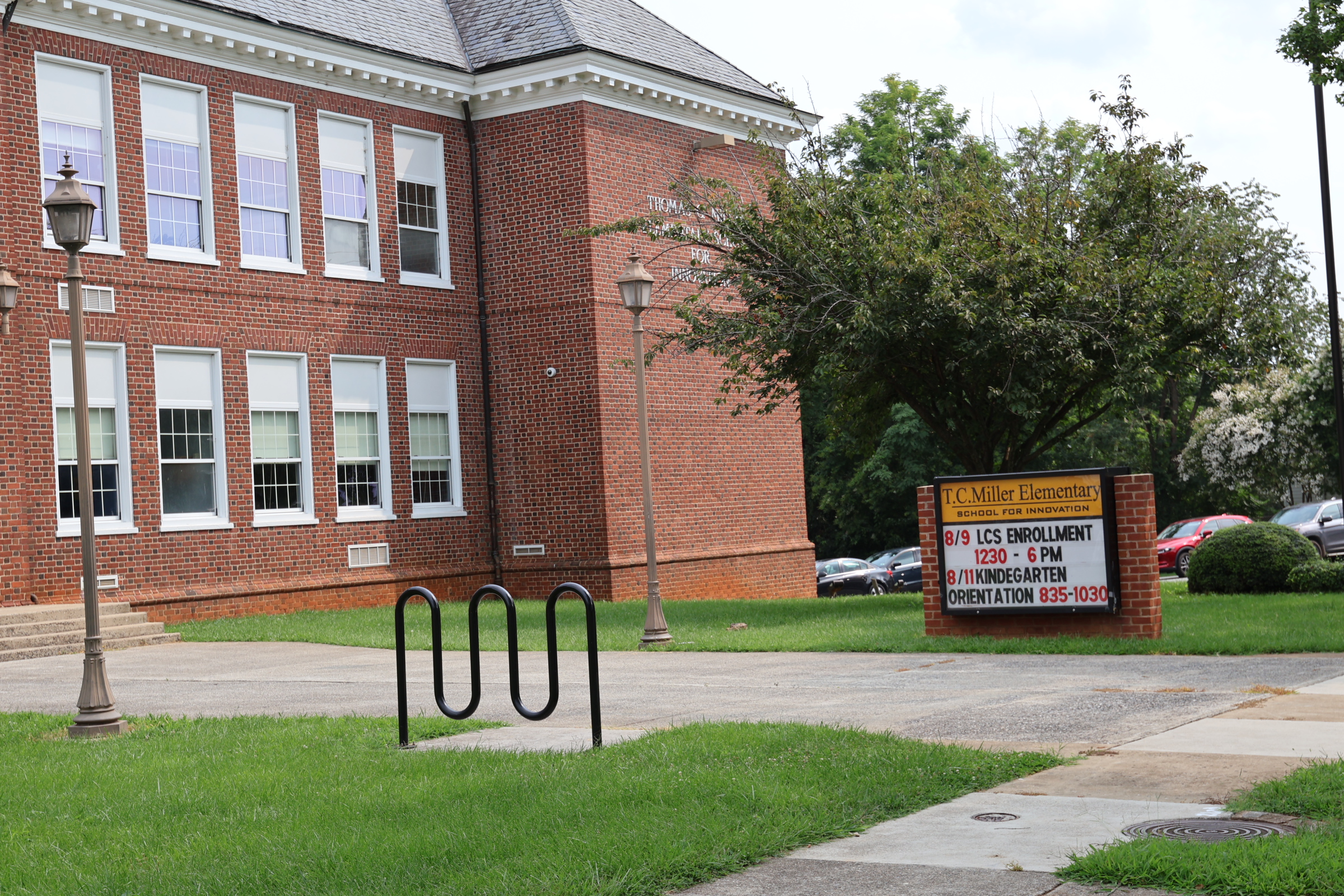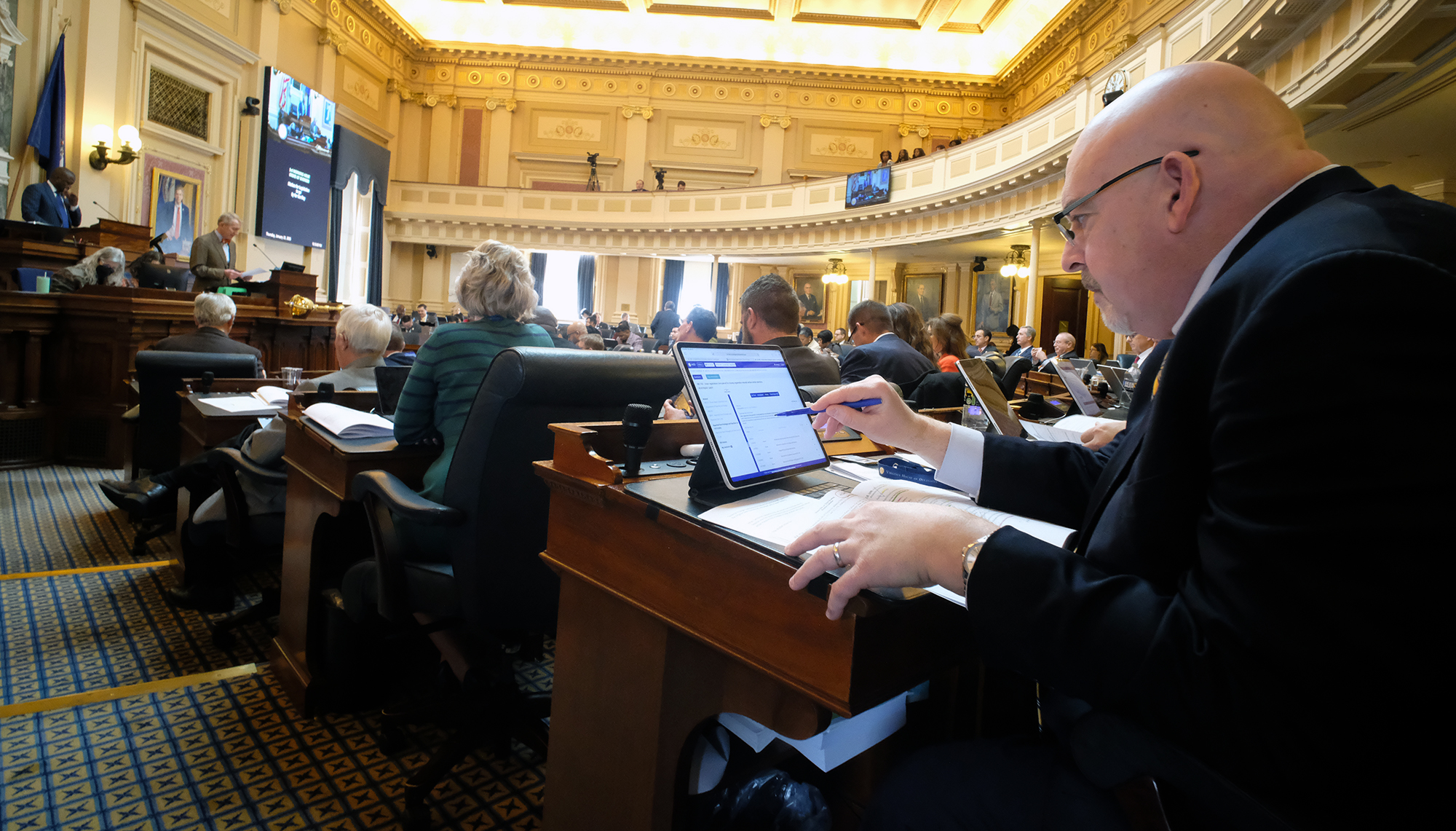Want more on Virginia’s population trends? We’ve collected all our demographic coverage in one place.
Roanoke, a city that’s losing population, is looking into whether it should build a third high school to alleviate overcrowding.
Lynchburg, a city that’s gaining population, is talking about whether to close a school.
How can this be?
Prepare yourself: We’re about to get schooled in demographics.
Roanoke: Two high schools are overcrowded
Let’s start with Roanoke, which appears to have the simplest answer: The two existing high schools, Patrick Henry and William Fleming, are simply too small for the number of students they have. That’s not directly related to the population trends swirling outside their campuses. If the buildings are too small, they’re too small. The question is what the trendlines show. There’s obviously no point in building an additional school if, come next year, the schools won’t be overcrowded. That’s somewhat of an exaggeration, but you get the idea.
Two podcasts that relate to this
We have two Cardinal News podcasts that relate to these enrollment trends.
Dwayne Yancey talks with Cardinal podcast host Dutchie Jessee about Virginia’s changing demographics, while Roanoke Valley reporter Samantha Verrelli talks about Roanoke’s budget.
Find all our podcasts here.
We talk about population rising or falling, as if it were the water levels in the Roanoke River — or, in the case of Lynchburg, the James River. It’s not quite that simple.
Four different things drive population changes, which can be grouped into two categories: Either births exceed deaths or deaths exceed births. This is called natural change. Meanwhile, either more people move in than move out (net in-migration) or more people move out than move in (net out-migration). Even in a community that, statistically, has no population change at all, all these things are moving up and down beneath the surface.
To say that Roanoke is losing population is true, but that also conjures up an inaccurate picture of a failing community. The only reason Roanoke is losing population is that it has more people who are dying than being born. That’s a very natural consequence of both an aging population and declining birth rates nationally. Science has yet to find a cure for death, and many governments around the world have found themselves powerless to counter the social and economic trends that have driven down birth rates.
I think a better measure of a community’s “success” or “failure” is whether people want to move there or leave there. We always see some of both, but the key is how they balance out. In Roanoke’s case, since the 2000 census, the city has seen a total of 391 more people move in than move out. That net in-migration gets wiped out statistically by Roanoke having 898 more deaths than births. Still, if you live in Roanoke, and look down your block, you’re more likely to see moving vans coming in than moving vans pulling away.
Roanoke’s net in-migration is lower than elsewhere: Lynchburg, a smaller city, has three times more net in-migration. Danville, smaller still, has four times more people moving in. Still, Roanoke is on the plus side.
There’s also the prospect of more net in-migration. Over the past dozen years, the Roanoke Valley (the whole metro area, not just the city) has steadily risen as the destination of choice for people moving out of the Washington, D.C., metro area — from 17th to 11th. If President Donald Trump’s government downsizing prompts more people to move out of the capital region, it’s possible that we’ll see an uptick in people moving into the Roanoke Valley above the current levels — and that some of them will wind up in the city.
In contrast to all that, we have the matter of school enrollment projections from the Weldon Cooper Center for Public Service at the University of Virginia. The center, which handles official demographic projections for the state, forecasts that Roanoke’s school-age population will decline over the next five years.
The first catch: The decline is estimated to be 406 students, but that’s across all age levels, not just high school. Even if those were all high school students, that would only cut the overcrowding in the two high schools by half, not eliminate it, so a declining enrollment won’t fix the problem. Each school is said to have 300 to 400 more students than it was designed for. Further, if you’re looking at building a new school, you need to look across a longer time horizon — and the city projects that over the next 25 years enrollment will increase, not decrease. While I am not a demographer, given the trends we’re seeing — net in-migration — the prospect of increased enrollment in Roanoke seems a reasonable prospect. Indeed, the Weldon Cooper Center projects that Roanoke’s population, officially counted at 100,011 in 2020 and now estimated at 99,504, will rise back above the 100,000 mark by 2030 and grow to 109,621 by 2050.
And that’s why a city that’s losing population is looking at building another high school.
Lynchburg: An elementary school is on the chopping block

Lynchburg’s situation is more complicated, as many things in Lynchburg tend to be. In 2023, the school board voted to close two elementary schools: T.C. Miller and Sandusky. In 2024, the school board reversed course and voted to keep both open. Now, a school board committee has once again voted to close T.C. Miller as an elementary school, with the goal of converting it into a pre-K school only.
The demographics in Lynchburg are more complicated, too. While Roanoke is losing people through deaths outnumbering births but gaining people by more people moving in than moving out, Lynchburg is gaining people in both demographic categories. Lynchburg is unusual by Virginia standards in that births outnumber deaths. Since 2020, the city has had a net gain of 142 people through births exceeding deaths. This is likely a function of Lynchburg being something that Roanoke is not: It’s a young city, with the fifth-lowest median age in the state.
Lynchburg is also a bigger magnet for newcomers than Roanoke is. Since 2020, it’s had a net gain of 1,245 people. That’s one of the biggest gains west of the urban crescent. Now, Lynchburg’s demographic stats may be somewhat skewed by the presence of so many colleges. All those college students certainly account for the young demographics but not necessarily the high in-migration. College students move out, too, but something is keeping Lynchburg’s in-migration high. Just up U.S. 29, Charlottesville’s net in-migration since 2020 is just 74 people. The localities around Lynchburg all have high net in-migration, too. Bedford County is 2,364, Campbell County is 1,229 and Amherst County is 601. The Lynchburg metro area is simply a hotspot. Like Roanoke, it’s also risen as a destination of choice for people moving out of the Washington metro, so is likewise in a position to pick up even more people if there’s an increased exodus out of Northern Virginia.
Nonetheless, Lynchburg is forecast to see its school enrollment decline, with a drop of 498 students over the next five years. That’s nearly a 7% drop in the school-age population in a city that’s gaining population (albeit at a relatively modest 1.7% rate over the past four years).
However, Weldon Cooper’s enrollment projections take us to 2029. Its long-range population forecasts (for the entire population, not just school-age) see strong population growth in Lynchburg. The Hill City is now estimated as having a population of 81,782. That’s actually higher than what Weldon Cooper projected three years ago that the city’s population would be in 2030. Lynchburg’s population growth is running ahead of projections. Beyond that, Weldon Cooper sees Lynchburg growing to 86,838 by 2040 and 93,708 by 2050. The latter would represent a 14.5% increase over today’s population.
What will Lynchburg’s school needs look like in 25 years? That depends on a lot of factors that are harder to predict. Will birth rates continue to decline or will they rebound? How strong will the trends of home schools and private schools be? That’s a particularly relevant question in Lynchburg, which has a major private school in Liberty Christian Academy. Will we see some “black swan” event that scrambles population trends? We’ve already seen one such event — the pandemic, which accelerated the growth of remote work and, with it, the migration of people out of metro areas to smaller communities. Demography is destiny, the saying goes, but that only applies to people already born. If birth rates changed dramatically one way or another, or if a decade or so from now it’s possible to go live on Mars (just to pick an absurd example), then all those forecasts change.
Lynchburg’s School Board may vote April 1 on that subcommittee recommendation to close T.C. Miller.
It’s not my place to offer advice, even if I had any, which I don’t. But these are the numbers that both Lynchburg and Roanoke have to deal with.
What to look for next week in Richmond

The General Assembly returns to Richmond on Wednesday. In this week’s issue of West of the Capital, our weekly political newsletter, I’ll offer up five things to look for out of the reconvened session. Plus: A Civil War story with relevance for our current political situation.
You can sign up for any of our free newsletters right here:



